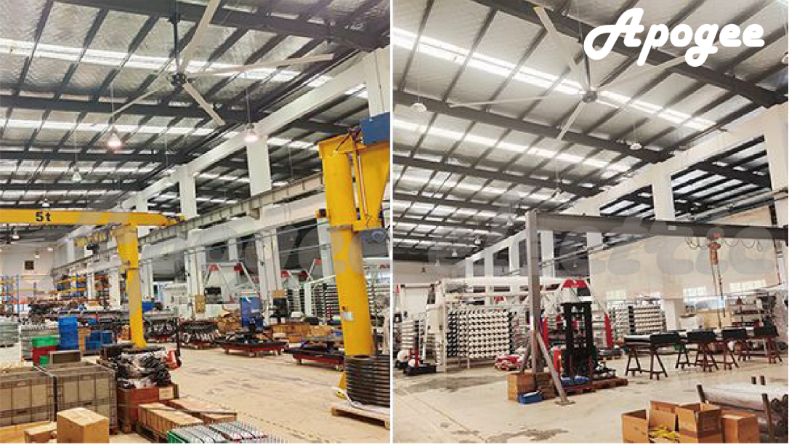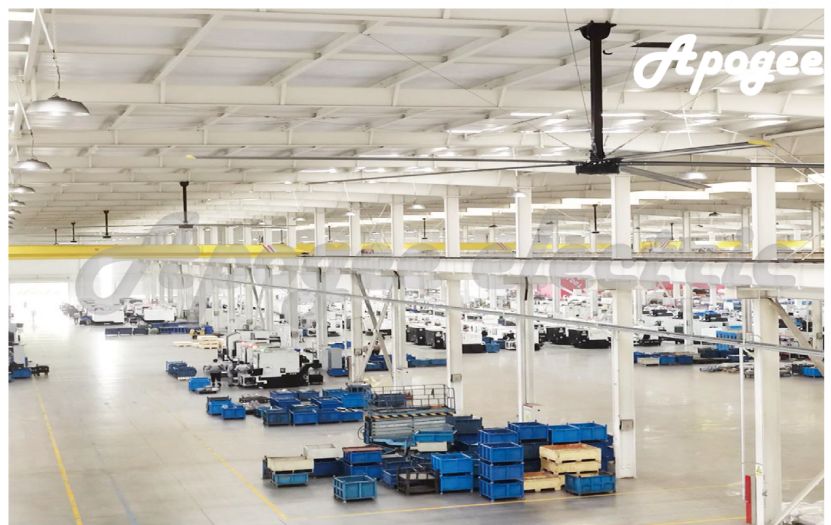Ceiling fans and High Volume Low Speed (HVLS) fans serve similar purposes of providing air circulation and cooling, but they differ significantly in terms of size, design, and functionality. Here are some key differences between the two:
1.Size and Coverage Area:
Ceiling fans: Typically range in size from 36 to 56 inches in diameter and are designed for residential or small commercial spaces. They are mounted on ceilings and provide localized air circulation in a limited area.
HVLS fans: Much larger in size, with diameters ranging from 7 to 24 feet. HVLS fans are designed for industrial and commercial spaces with high ceilings, such as warehouses, factories, gymnasiums, and airports. They can cover a much larger area with their massive blades, typically spanning up to 20,000 square feet per fan.
2.Air Movement Capacity:
Ceiling fans: Operate at higher speeds and are designed to move smaller volumes of air efficiently within a confined space. They are effective for creating a gentle breeze and cooling individuals directly beneath them.
HVLS fans: Operate at low speeds (typically between 1 to 3 meters per second) and are optimized for moving large volumes of air slowly over a wide area. They excel at creating a consistent airflow throughout a large space, promoting ventilation, and preventing heat stratification.
3.Blade Design and Operation:
Ceiling fans: Typically have multiple blades (usually three to five) with a steeper pitch angle. They rotate at high speeds to generate airflow.
HVLS fans: Have fewer, larger blades (usually two to six) with a shallow pitch angle. The design allows them to move air efficiently at low speeds, minimizing energy consumption and noise levels.
4.Mounting Location:
Ceiling fans: Mounted directly on the ceiling and are installed at a height suitable for residential or standard commercial ceilings.
HVLS fans: Mounted on high ceilings, usually ranging from 15 to 50 feet or more above the ground, to take advantage of their large diameter and maximize airflow coverage.
5.Application and Environment:
Ceiling fans: Commonly used in homes, offices, retail spaces, and small commercial settings where space and ceiling heights are limited.
HVLS fans: Ideal for large industrial, commercial, and institutional spaces with high ceilings, such as warehouses, manufacturing facilities, distribution centers, gymnasiums, airports, and agricultural buildings.
Overall, while both ceiling fans and HVLS fans serve the purpose of air circulation and cooling, HVLS fans are specifically designed for industrial-scale applications and are optimized to move large volumes of air efficiently over vast areas with low energy consumption and minimal noise.
Post time: Apr-07-2024



